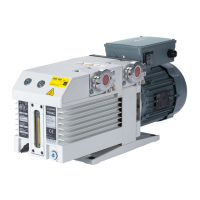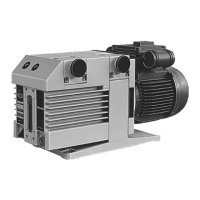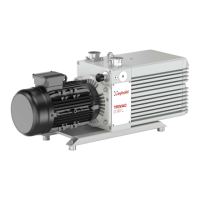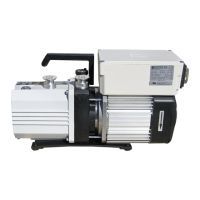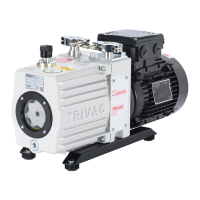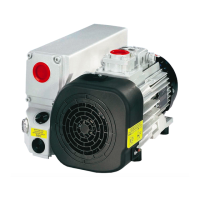Maintenance
3 Maintenance
Disconnect the electrical connections
before disassembling the pump. Make
absolutely sure that the pump cannot be
accidentally started.
If the pump has pumped harmful
substances, ascertain the nature of hazard
and take adequate safety measures.
Observe all safety regulations.
If you send a pump to LEYBOLD for repair please
observe the information provided in Section 3.8.
When disposing of used oil, you must
observe the applicable environmental
regulations!
Due to the design concept, TRIVAC B pumps require
very little maintenance when operated under normal
conditions. The work required is described in the
sections below.
All work must be carried out by suitably
trained personnel. Maintenance or repairs
carried out incorrectly will affect the life and
performance of the pump and may cause
problems when filing warranty claims.
LEYBOLD offers practical courses on the maintenance,
repair, and testing of TRIVAC B pumps. Further details
are available from LEYBOLD on request.
If the TRIVAC B is used in ambient air which
is much contaminated, make sure that the
air circulation and the gas ballast valve are
not adversely affected.
When the TRIVAC B has been pumping
corrosive media we recommend that
possibly planned maintenance work be
carried out immediately in order to prevent
corrosion of the pump while it is at
standstill.
3.1 Checking the Oil Level
During operation of the TRIVAC B the oil level must
always remain between marks (9/2) and (9/3) at the oil-
level glass. The amount of oil must be checked and
topped up as required.
Fill in oil only after the pump has been
switched off.
3.1.1 Checking the Condition of N 62 or
HE 200 Oil
a) Visual check
Normally the oil is clear and transparent. If the oil
darkens, it should be changed.
b) Chemical check
The neutralisation number of N 62 oil is determined
according to DIN 51558. If it exceeds 2, the oil should be
changed.
c) Viscosity check
If the viscosity of N 62 oil at 25 °C exceeds 300 mPas,
the oil should be changed.
If gases or liquids dissolved in the oil result in a
deterioration of the ultimate pressure, the oil can be
degassed by allowing the pump to run for approx. 30
min. with the intake port closed and the gas ballast valve
open.
When wanting to check the oil, switch off the pump first
and drain out from the warm pump the required amount
of oil from the oil drain (9/4) into a beaker or similar.
15
Caution
Caution
Caution
Warning
Caution
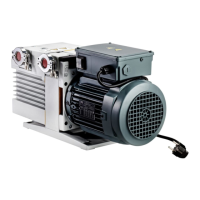
